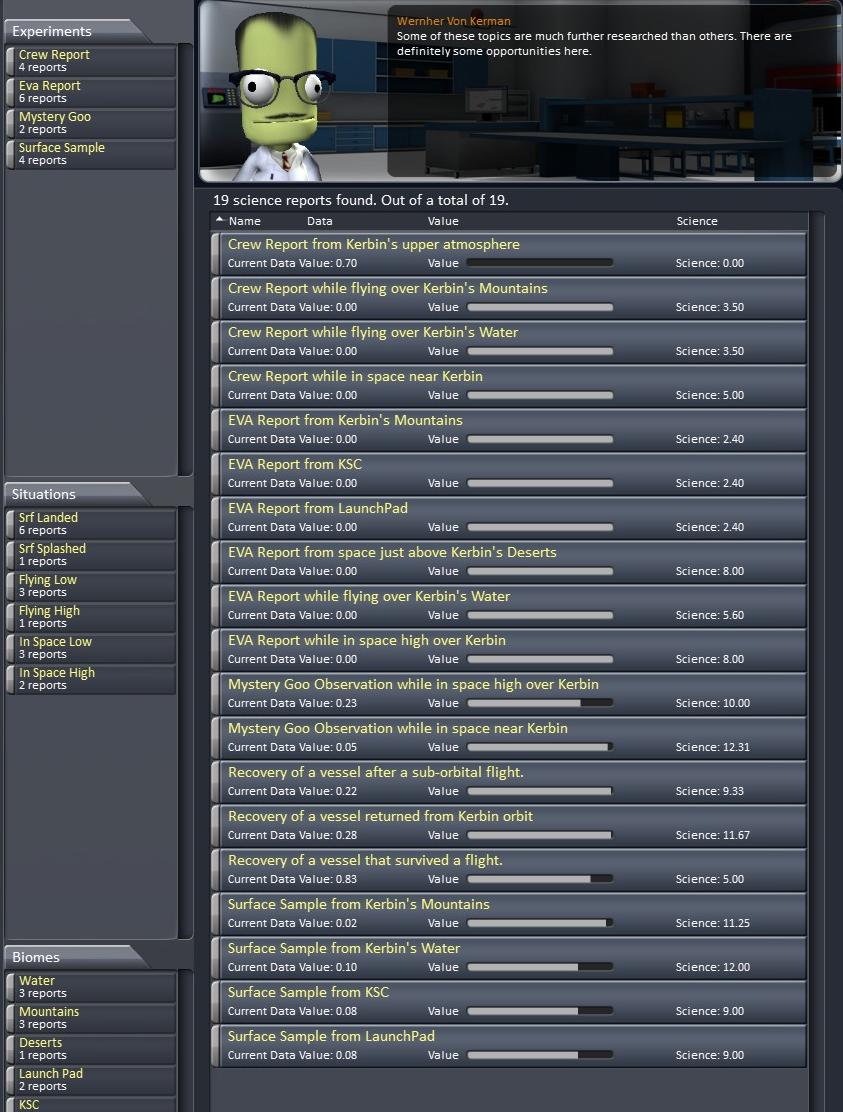In Kerbal Space Program, Science depends on the location and the type of experiment.
Altitude Corridor
In detail, for Kerbin, this makes five altitude corridors (with some caveats):
- On the Ground (0m)
- Lower Atmosphere (≤ 18km)
- Upper Atmosphere (≤ 69km)
- Near Space (≤ 250km)
- Outer Space (> 250km)
Biomes
On top of that, Kerbin knows various biomes:
- Grasslands
- Highlands
- Mountains
- Deserts
- Badlands
- Tundra
- Ice Caps
- Water
- Shores
Additionally, the Space Center also has various mini-biomes which return separate results, but only when on the ground (above ground, the whole space center counts as "Shores"):
- Administration
- Astronaut Complex
- Crawlerway
- Flag Pole
- LaunchPad
- Mission Control
- R&D
- Runway
- SPH
- Tracking Station
- VAB
Experiments
Depending on the experiment, some of these altitude corridors have per-biome results, others only have one result for the entire corridor.
In particular:
The Surface Sample is a biome-dependant surface-only experiment.
The EVA Report is biome-dependant on the surface, in the lower atmosphere and in near space; it is global everywhere else.
The Crew Report is biome-dependant on the surface and in the lower atmosphere; it is global everywhere else.
The Mystery Goo Observation (available through the Mystery Goo™ Containment Unit from the Basic Rocketry tech node) is biome-dependant on the surface; it is global everywhere else.
Storing Experiments
There can only be one crew report per part that produces a crew report (that is, per capsule), which is stored in the part. It can be transmitted, in which case it makes space for a new crew report.
Both the EVA report and the Surface Sample experiments can be stored in the capsule as well, with each combination of altitude corridor and biome once. So, you can store a surface sample from every biome, and EVA reports from every biome all at once.
Transmitting Results
Results can either be recovered by landing the craft on Kerbin and then recovering it from the Tracking Station (or from the craft view, where it's hidden at the top of the screen), or by transmitting them home.
Transmission is hardly effective this early into the tech tree - you lack the electricity to send the results back. Nevertheless, you can - for example - send back one crew report to make space for another, so here's some information about transmission as well:
Every experiment has a transmission efficiency, which reduces the Science yield on transmission (as opposed to recovery).
In the case of the Surface Sample this is 25%, which makes them an undesirable candidate for transmission.
Similarly, the Mystery Goo Observation has only 30% efficiency.
All reports (be that EVA or Crew), however, return a full 100%.


